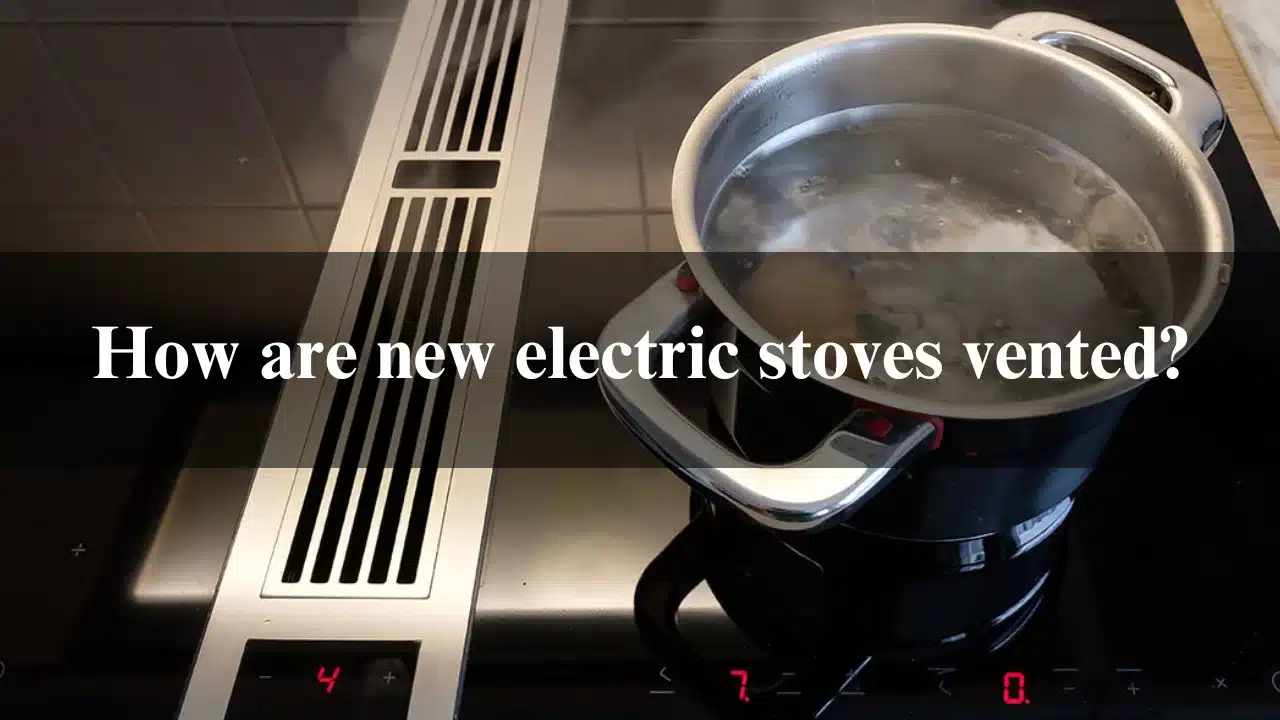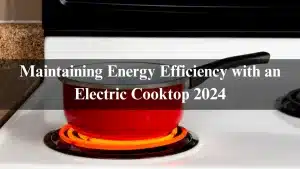Hey there! Have you ever wondered how electric stoves get rid of all the steam and cooking smells? Well, you’re not alone! Many people think that since electric stoves don’t have flames like gas stoves, they don’t need venting. But guess what? Even electric stoves need a way to clear the air.
In this guide, we’ll break down everything you need to know about venting your electric stove. We’ll talk about why venting is important, the different venting options, and how you can install one in your kitchen. Let’s get started!
Table of Contents
How Electric Stoves Work
What is an Electric Stove?
An electric stove is a kitchen appliance that uses electricity to cook food. Instead of using flames (like a gas stove), it heats up coils or a smooth glass surface to get the job done.
Analogy: Think of it like a toaster. Instead of a fire, it uses a heating element (those glowing red wires) to cook your food.
How Do They Heat Your Food?
Electric stoves heat up metal coils or a flat cooking surface. When you turn the knob, electricity flows through these coils, making them hot. The heat then transfers to your pot or pan, cooking your food!
Do Electric Stoves Need Venting?
What Venting Means
Venting is all about getting rid of the steam, smoke, and smells that happen while cooking. Even though electric stoves don’t produce flames, they still create heat and steam. And trust me, nobody wants a smoky or smelly kitchen!
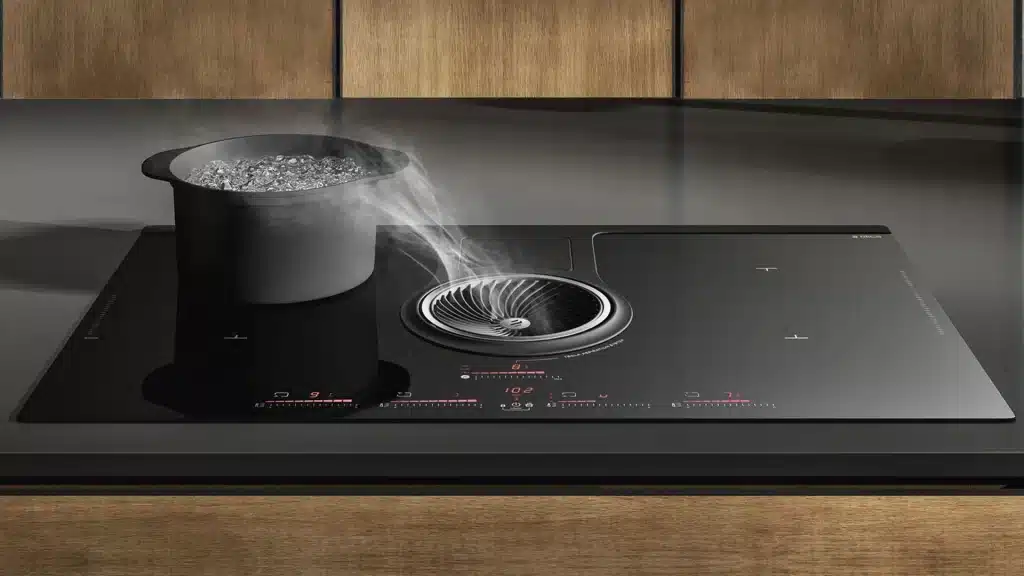
Why Venting is Important
Imagine frying bacon. Without venting, the smell could linger for hours. Yikes! Plus, venting helps remove grease particles from the air. This keeps your kitchen cleaner and your lungs happy!
Types of Venting Systems for Electric Stoves
Range Hoods: The Classic Venting Solution
A range hood is a device that sits above your stove and sucks up all the air and particles from your cooking. It has a fan that pulls the steam, smoke, and smells out of the kitchen.
- How it works: Range hoods use a fan to draw air through a filter, capturing grease and odors. Some hoods push the air outside, while others recirculate it back into the kitchen.
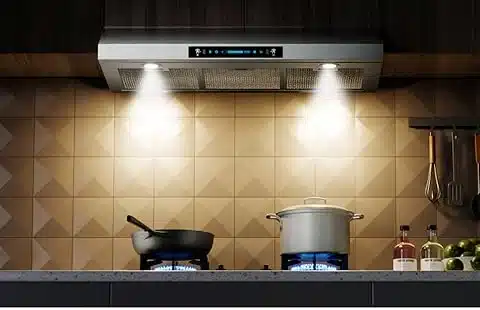
Real-life Example: Think about when you’ve been in a kitchen and heard a humming noise above the stove. That’s the range hood working its magic!
Types of Range Hoods:
- Wall-mounted range hoods: Installed directly against the wall above the stove, these are the most common types.
- Under-cabinet range hoods: Mounted underneath kitchen cabinets, these take up less space while providing effective ventilation.
- Island range hoods: Used in kitchens where the stove is on a kitchen island. They hang from the ceiling and ventilate large open areas.
Range Hood Features to Look for
Fan Power (CFM Ratings)
When choosing a range hood, pay attention to its CFM (cubic feet per minute) rating. This measures how much air the fan can move. Electric stoves typically require a hood with a CFM rating between 150 and 300, depending on the size of the kitchen and how much cooking you do.
Lighting
Many range hoods come with built-in lighting, which enhances visibility while cooking. LED lights are a popular energy-efficient choice.

Filters
Range hoods usually contain grease filters, which capture airborne particles. For ductless models, charcoal filters are used to trap odors. Cleaning or replacing these filters regularly is crucial for maintaining performance.
Ventless Hoods: An Alternative Option
A ventless hood is just like it sounds – it doesn’t vent air outside. Instead, it filters the air and sends it back into the room.
- How it works: The air passes through filters that trap grease and absorb odors. Then, it circulates back into the kitchen.
Fun Fact: Ventless hoods are perfect if your kitchen doesn’t have an outside wall for venting. They’re easier to install but may not be as powerful as traditional range hoods.
Downdraft Ventilation
Downdraft ventilation is an innovative option for those looking to avoid overhead range hoods. Instead of pulling smoke and steam upwards, downdraft vents suck air downward, through vents built into the cooktop or installed at the back of the stove. This air is either ducted outside or filtered and recirculated.
This type of ventilation is particularly useful for kitchen islands or open-plan kitchens where traditional range hoods might obstruct sightlines or disrupt the design flow.
Ductless (Recirculating) Range Hoods
Ductless range hoods are another option for electric stoves. These units use filters to capture grease and odors and then release the filtered air back into the kitchen. Although they don’t vent outside, they can significantly improve air quality by removing particles and odors. Regular maintenance of the filters is key to keeping these systems effective.
How to Choose the Right Venting System?
Factors to Consider
When choosing a venting system, here are a few things to think about:
- Kitchen Layout: Do you have an outside wall where you can vent the air? If not, a ventless hood may be the way to go.
- Cooking Style: If you cook a lot of greasy or smoky foods, you’ll want a strong venting system.
- Noise Level: Some range hoods can be loud, so if you prefer a quieter kitchen, look for a hood with a low noise level.
Venting Options for Different Kitchens
- Small Kitchens: In a tiny kitchen, a ventless hood or an under-cabinet range hood can be a great option.
- Large Kitchens: For bigger spaces, a powerful range hood that vents outside will keep your kitchen air clean.
Tip: Always measure the space above your stove to make sure the hood you choose will fit!
Installing a Venting System for Your Electric Stove
Steps for Installation
Ready to install a venting system? Here’s how to get started:
- Choose the Right Venting Option: As we talked about, make sure you pick a venting system that fits your kitchen and cooking needs.
- Prepare Your Space: Measure the space above your stove and make sure you have the right tools for the job.
- Install the Vent Hood: Depending on the type, you’ll either need to cut a hole in the wall for venting outside or set up the filters for a ventless system.
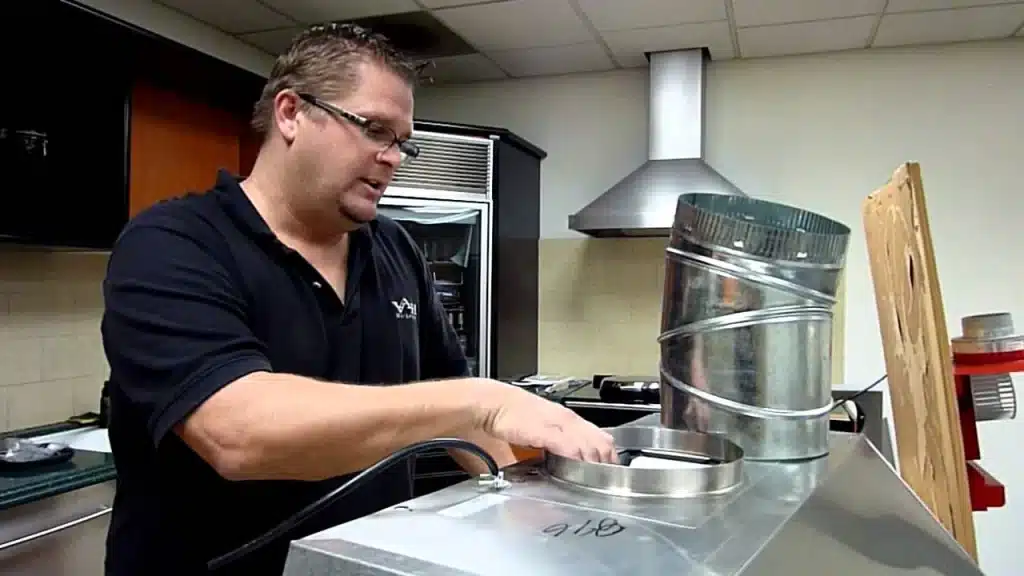
Friendly Reminder: Installing a vent that goes outside may require some wall cutting or electrical work. If you’re not comfortable with that, it’s best to call a pro!
Professional Help vs. DIY
While you can install some venting systems yourself, others (especially those that need outside venting) are best left to a professional. You don’t want to mess up the venting process, because that could lead to bigger problems down the road.
Encouragement: If you’re handy with tools, you’ve got this! Just follow the instructions, and you’ll be cooking in no time.
Comparing Electric Stove Ventilation with Gas Stove Ventilation
Gas stoves produce combustion gases like carbon monoxide and nitrogen dioxide, making ventilation a safety necessity. Electric stoves, by contrast, don’t emit these gases, so they don’t require venting for safety reasons. However, both types of stoves benefit from ventilation when it comes to reducing heat, moisture, and airborne particles.
In general, gas stove ventilation systems require stronger fans and larger hoods due to the need to expel potentially harmful fumes. With electric stoves, the focus is more on removing moisture, steam, and grease.
Advantages of Proper Ventilation
- Cleaner Air: Effective ventilation removes smoke, steam, and cooking odors, leading to fresher air in your kitchen and home.
- Moisture Control: Excess moisture from cooking can cause mold or mildew over time, especially in small or closed-off kitchens.
- Reduced Cleaning: By capturing grease and steam, ventilation systems prevent sticky residue from accumulating on walls, ceilings, and cabinets.
- Comfort: Reducing the heat and steam makes your cooking environment more comfortable.
Common Mistakes When Venting Electric Stoves
Some common mistakes include installing a range hood with too low of a CFM rating, neglecting to clean filters, or opting for a ductless system when ducted ventilation would be more effective. Avoid placing the hood too high above the stove, as this reduces its ability to capture steam and smoke.
Energy Efficiency and Ventilation Systems
Many modern range hoods come with energy-efficient features like LED lighting and variable-speed fans. Opting for energy-efficient ventilation helps reduce electricity costs while maintaining a comfortable cooking environment.
Key Takeaways
✦ Electric stoves heat up using electricity, not flames, but they still produce steam and smells that need venting.
✦ Range hoods are the most common venting system and can either vent outside or recirculate air inside.
✦ Ventless hoods are a great option for homes without outside walls but may not be as powerful as traditional vented hoods.
✦ Make sure to consider your kitchen layout, cooking habits, and noise preferences when choosing a venting system.
✦ If you’re unsure about installing a vent yourself, it’s always a good idea to call in a professional!
Related Articles:
How does a single burner on an electric stove get hot? 2024
Is It Possible To Use Two Electric Stoves At The Same Time?
How many burners are there on an electric stove? 5 Types
Conclusion:
So, what have we learned? While electric stoves don’t have flames like gas stoves, they still need proper venting. A good venting system keeps your kitchen smelling fresh and reduces grease buildup in the air. You’ve got options, from traditional range hoods that vent outside to ventless hoods that filter and recirculate the air.
By understanding your kitchen layout, cooking habits, and personal preferences, you can pick the perfect venting system for your home.
FAQs
Do electric stoves need to be vented like gas stoves?
No, electric stoves don’t produce combustion gases, but proper ventilation is still necessary to remove steam, grease, and odors.
Can I use a ductless range hood with my electric stove?
Yes, ductless range hoods work with electric stoves, though they recirculate air back into the kitchen rather than vent it outside.
What is the best ventilation option for a small kitchen?
A ductless range hood or over-the-range microwave vent is often ideal for small kitchens due to ease of installation and space efficiency.
How often should I clean my range hood filter?
For optimal performance, clean or replace your range hood filters every 1-3 months, depending on your cooking frequency.
Is downdraft ventilation effective for electric stoves?
Downdraft ventilation can be effective, but it may not perform as well as an overhead range hood, especially for high-heat cooking.

